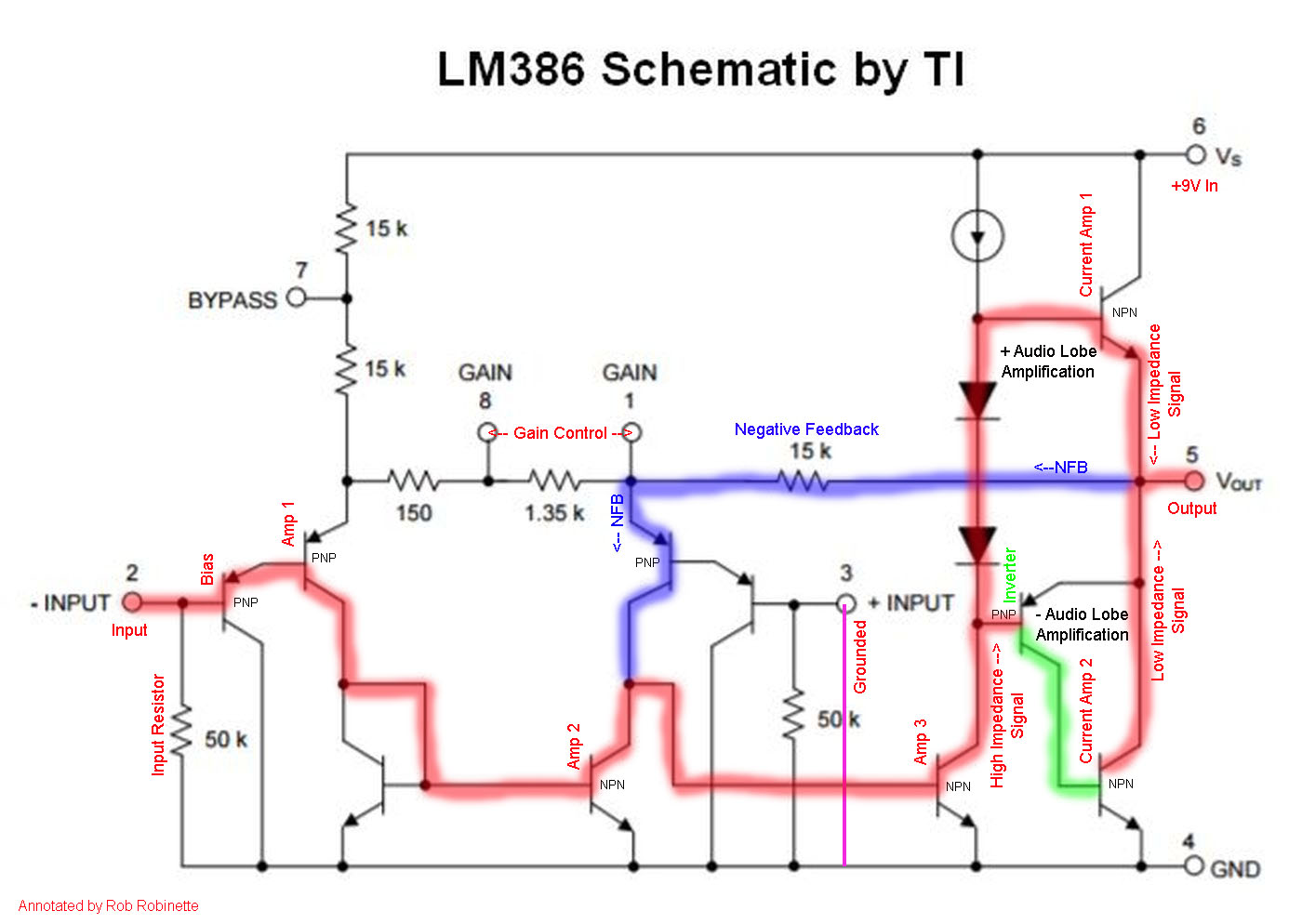I have a How the Ruby Amp Works webpage and I would like to go into some detail of how the LM386 chip functions on the guitar audio signal. As many of you know I'm a tube guy and I'm pretty weak on solid state theory.
The annotated schematic below is my first attempt to describe what each transistor in the LM386 is doing to the audio signal. Please look it over and let me know what I have wrong.
Keep in mind in the Ruby Amp pin 3 (+ input) is grounded and only input pin 2 is used.
The red line is the guitar signal path through the chip.
Is it correct to call all 10 of the transistors in the LM386 op-amps?

The annotated schematic below is my first attempt to describe what each transistor in the LM386 is doing to the audio signal. Please look it over and let me know what I have wrong.
Keep in mind in the Ruby Amp pin 3 (+ input) is grounded and only input pin 2 is used.
The red line is the guitar signal path through the chip.
Is it correct to call all 10 of the transistors in the LM386 op-amps?


Comment